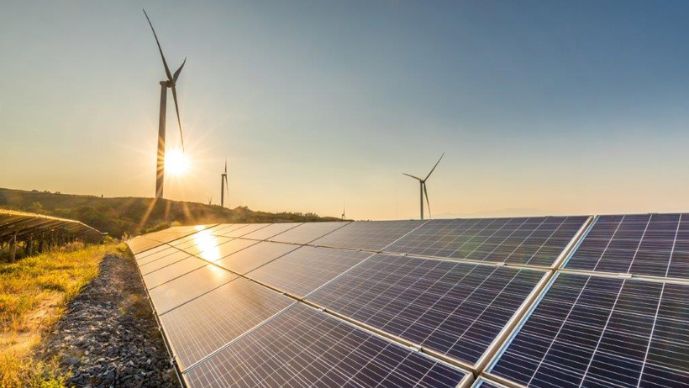
The recent passage of the One Big Beautiful Bill Act (OBBBA) has
introduced significant hurdles to obtaining the tax equity
financing upon which solar developers have traditionally relied. As
the industry seeks to adapt to this changed landscape, new forms of
financing may emerge as key drivers of solar deployment.
One such mechanism is Commercial Property Assessed Clean Energy or
"C-PACE." For commercial property owners and developers,
C-PACE offers a powerful tool to finance energy, water, and
resilience-related improvements with no upfront costs, long-term
repayment, and significant energy savings. As tax equity financing
becomes more challenging to secure, C-PACE could play a
particularly important role for commercial and industrial (C&I)
solar developers seeking financing in a post-OBBBA world.
OBBBA's Restriction of Solar Tax
Incentives
Among other things, under the OBBBA, solar projects must either
begin construction within 12 months of the OBBBA's passage
(i.e., by July 4, 2026) or be placed in service by the end of 2027
to qualify for the Section 48E investment tax credit (ITC) or
Section 45Y production tax credit (PTC). And while the OBBBA
referenced the IRS guidance defining "beginning of
construction," offering a ray of hope to developers seeking
further clarity regarding what would be required of them, President
Trump issued an Executive Order (EO) on July 7, 2025, following the
OBBBA's passage, directing the Secretary of the Treasury to
"strictly enforce the termination of the clean electricity
production and investment tax credits" and, more specifically,
to issue new, stricter guidance on "beginning of
construction" with 45 days of the EO1. This call
for new "beginning of construction" guidance has thrown
into doubt years of industry consensus around the meaning of that
phrase for purposes of claiming the ITC and PTC.
The OBBBA also introduced a range of new requirements for ITC and
PTC eligibility related to so-called "prohibited foreign
entities." The requirements, among other things, bar
prohibited foreign entities from claiming the ITC or PTC, and
restrict projects that begin construction after December 31, 2025
from sourcing too great a proportion of their project equipment
(based on costs) from suppliers that are "prohibited foreign
entities." The definition of "prohibited foreign
entity" is broad and beyond the scope of this article, but, at
a high level, the requirements will primarily restrict Chinese
investment and the use of equipment manufactured in China or by
entities with ties to China.
C-PACE: A potential alternative financing
solution
In its basic form, C-PACE allows commercial property owners to
finance a broad range of building improvements, including solar
installations, using the value of their property. Unlike
traditional loans, C-PACE offers long-term, low-cost financing that
is repaid through a benefit assessment lien on the property. This
lien is pari passu with, or subordinate to, municipal taxes but
senior to all other liens, providing security for lenders and
flexibility for property owners.
Key benefits for property owners and developers include:
- Flexibility of Use: C-PACE is a proven way for commercial property owners and developers to finance new construction, complex renovations, simple energy upgrades, or to recapitalize completed projects. C-PACE can finance commercial real estate projects from $100K to $100MM plus.
- Lower Cost of Capital: Property owners can replace expensive debt or equity with C-PACE financing, reducing their overall cost of capital.
- No Upfront Costs: Financing is available for up to 100% of the project cost, and it can be combined with other sources of funding.
- Long-Term Repayment: Loan terms can extend up to the weighted average life of the financed improvements—up to 30 years—with fixed or adjustable interest rates. Adjustable rate options typically offer greater flexibility if the borrower's intention is to pay off the C-PACE loan early.
- Regulatory Compliance: C-PACE can help property owners comply with updated municipal building codes and local environmental or greenhouse gas regulations.
- Energy Savings: With electricity prices expected to rise, energy improvements financed through C-PACE can significantly reduce a building's energy bills.
C-PACE can be combined with other financing solutions, like tax
equity, but it is a mechanism enabled by state and local policy and
thus relatively insulated from the vagaries of federal tax
policy.
The C-PACE loan process and eligibility rules accordingly vary from
state to state. In New York, C-PACE is available for commercially
owned properties, including those owned by corporations, LLCs,
partnerships, and REITs. Properties must not be in bankruptcy or
subject to pending bankruptcy proceedings, and owners must be
current on mortgage and property tax payments. C-PACE loans can
finance installation of renewable energy systems (solar, wind,
geothermal, fuel cells, and more), energy efficiency improvements
(window and door replacement, lighting, insulation, HVAC upgrades,
and similar projects), as well as energy audits.
In many states across the country, C-PACE can be used to finance a
much broader range of measures that improve the performance of
commercial buildings. C-PACE can also be used retroactively to
refinance previously completed projects. Indeed, C-PACE is
available throughout the nation, with enabling legislation active
in 40 states plus D.C., and programs currently operating in 32
states plus D.C., according to PACENation. It has financed
everything from a 80 kW solar PV system for a commercial office in Westport, Connecticut to a
100 kW system as part of a waterfront office development in Milwaukee,
Wisconsin. Property owners and developers have used C-PACE to
finance over $10 billion in commercial, multifamily, and industrial
projects as of mid-2025.
With the ink on the OBBBA barely dry, it is difficult to predict
how the dust will settle for federal tax incentives for the solar
industry. Now may be the time for solar developers in the C&I
space to consider additional financing solutions, including giving
C-PACE a hard look to see if it is feasible for their projects.
Long overshadowed by the federal tax code's generous
incentives, C-PACE is poised to potentially play a much greater
role in helping finance C&I solar projects.
Footnote
1. https://www.whitehouse.gov/presidential-actions/2025/07/ending-market-distorting-subsidies-for-unreliable-foreign%E2%80%91controlled-energy-sources/
The content of this article is intended to provide a general guide to the subject matter. Specialist advice should be sought about your specific circumstances.



